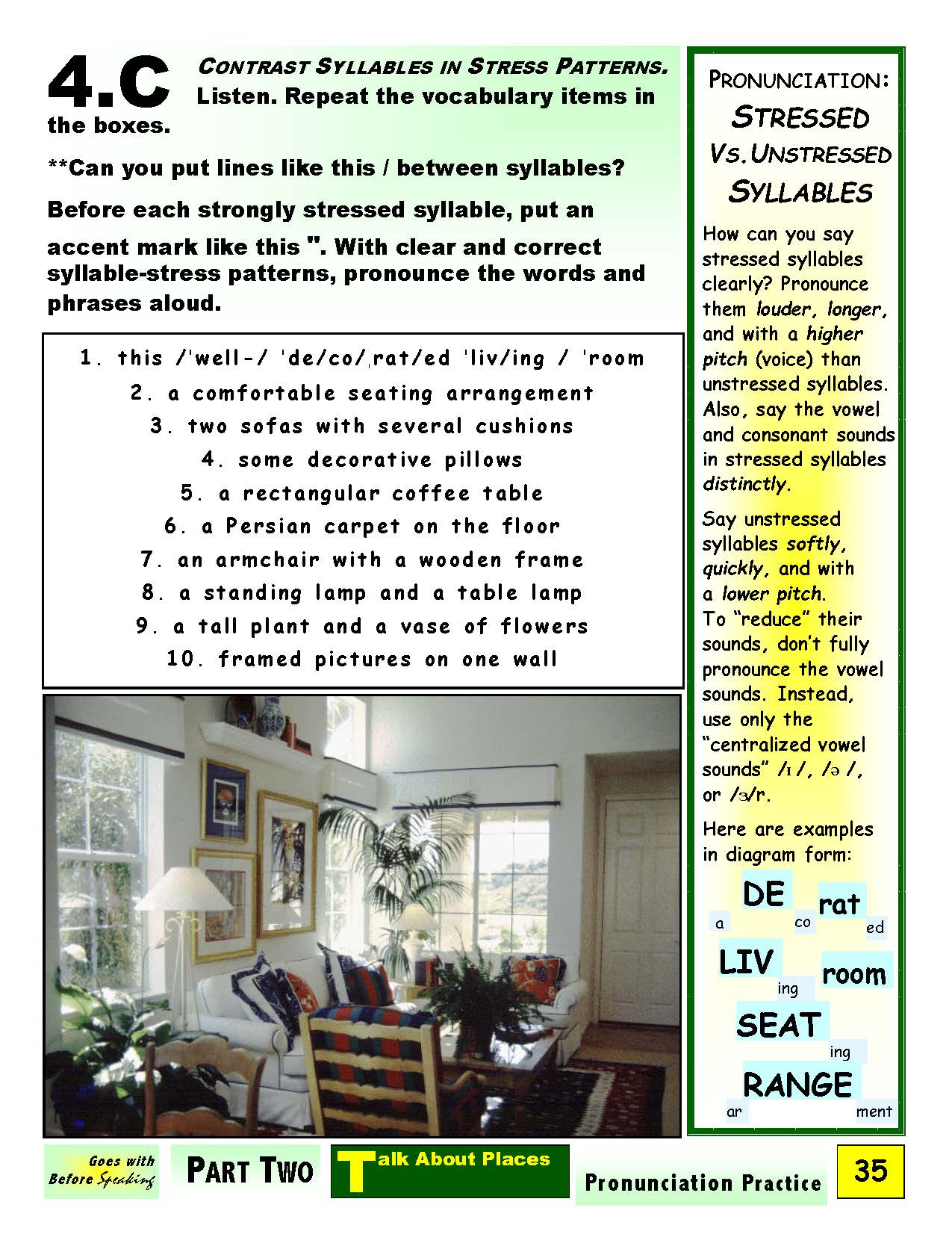1
/
of
5
Work/Life English
E-02.02 Recognize & Contrast Numbers of Syllables & Syllable-Stress Patterns in Place Description
E-02.02 Recognize & Contrast Numbers of Syllables & Syllable-Stress Patterns in Place Description
Regular price
$3.00 USD
Regular price
Sale price
$3.00 USD
Unit price
/
per
Sections 4.A to 4.D (Syllables, Stress, Focus, & Rhythm) of Part Two-4: Talk About Places, of Pronunciation Practice (Before Speaking). + Answer Key Pages
9+ 7 (16) pages
Who It’s For: High-Beginning to Intermediate Developers of Oral-Language Skills Going From Individual Sounds to Blended Syllables in One- & Polysyllabic Words & Phrases
Why It’s Useful: Analogous to Part Two-4 of Beginners’ Before Speaking with Pronunciation Principles, these Pronunciation Practice sections are titled “Recognize Numbers of Syllables” “Recognize Syllable-Stress Patterns,” “Contrast Syllables in Stress Patterns,” “Use Stress Patterns in Phrases & Sentences.” Charts & Sidebars supply the pedagogy. Vocabulary-cued Exercises provide practice + assessment of ability. Comparing responses to those of an Answer Key will improve accuracy.
What You’ll Do:
[1] In 4.A, listen and repeat 1-, 2-, 3-, & 4- (or more) syllable names of items. Get used to interpreting annotations that indicate Pronunciation: CAPITAL LETTERS for stressed syllables; dots ( . ) between syllables; accent marks (‘ ,) for strong or light stress; small letters for no stress. Use Explanations for hints in how to count syllables—after dividing words according to spelling. Do relevant practice Exercises.
[2] In 4.B, learn how to Recognize Syllable-Stress Patterns in words and expressions. To apply these principles, read aloud words and phrasing for (Things in) Places. To compare Stress Patterns, cross out the words that “don’t belong” in groups.
[3] In 4.C, contrast Stressed with Unstressed Syllables in Noun Phrases to use to describe Interior & Exterior Spaces. Try pedagogical techniques (a kazoo, a rubber band, tapping, hand movements) to “feel” Syllable-Stress Patterns.
[4] Refer to corresponding excerpted, attached pages from the Answer Key & Audioscript for Pronunciation Practice (Before Speaking). Also, for Oral Skills practice with Vocabulary & Grammar that correlates with PrPr (BeSp), consider Download 02.03, which contains Before Speaking Part Two-4.
Couldn't load pickup availability










